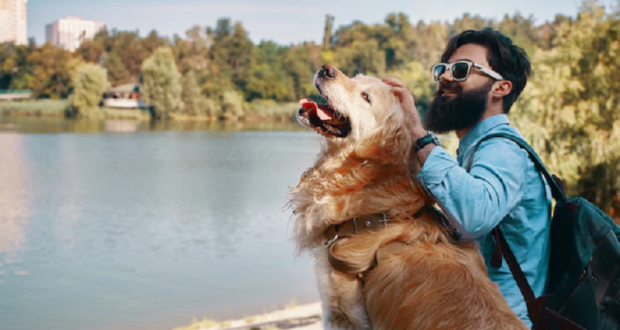The Ethical Complexities of Animal Tourism
Animal tourism has exploded in popularity, with travelers increasingly seeking interactions with wildlife and exotic species while on vacation. From taking selfies with sloths to feeding crocodiles by hand, opportunities abound to get up close with animals. The global animal tourism industry was valued at over $300 billion in 2022 and is projected to continue rapid growth.
However, this sunnier side of the industry often overshadows complex animal welfare issues. While animal tourism can aid conservation and education, it risks disrupting wildlife, promoting unethical captive venues, and causing immense stress for the animals involved. Achieving balance requires grappling with thorny ethical questions.
A Long History of Using Animal Tourism for Entertainment
Interactions between humans and animals have always been an integral part of travel. Ancient Roman aristocracy flaunted wealth by possessing exotic pets from distant colonies. Egyptian pharaohs built expansive private zoos filled with wild animals given as tributes.
By the 18th century, public menageries allowed ordinary people to view exotic species as entertainment, seeding the concept of a modern zoo. As interest in natural history grew, intrepid Victorian-era explorers embarked on perilous journeys to observe wildlife, sparking public imagination.
Modern Types of Animal Tourism
Today, animal tourism encompasses a far broader range of activities:
Captive Settings: Zoos, aquariums, animal parks, sanctuaries, and rehabilitation centers allow visitors to view captive wild animals. Some offer additional interactive experiences like petting, feeding, or shows.
Interactive Programs: Activities providing supervised close encounters with wildlife like swimming with dolphins, holding large birds, feeding and taking photos with captive species.
Wildlife Watching: Safari tours, whale watching, turtle nesting observation, and birding trips to view animals in natural habitats.
Volunteer Tourism: Travel combining sightseeing with hands-on volunteering at animal rescue centers, sanctuaries, scientific research sites, or conservation projects.
Hunting Tourism: Recreational hunting travel catering to sport hunters and trophy collectors.
Globally popular species include elephants, large cats, monkeys, marine mammals, birds of prey, reptiles, and endangered wildlife.
The Debate Around Impacts and Ethics of Animal Tourism
Advocates argue animal tourism positively impacts conservation, education, and local communities. Critics counter it often exploits animals for profit over ethics. The truth has nuances, but ethical questions should not be avoided.
Potential Benefits of Animal Tourism
Conserving Species and Habitats: Well-managed wildlife tourism funds conservation efforts, with visitor entry fees directed towards animal protection in many national parks globally. Educational wildlife venues also run captive breeding programs for endangered species.
Education and Positive Exposure: Responsible animal-based attractions offer learning opportunities to experience species not found locally and foster emotional connections potentially inspiring conservation support. Wildlife volunteering also enhances scientific research.
Community Empowerment: Nature tourism aids remote regions by generating jobs as guides, resort staff, park rangers, and related tourism services. Visitors’ expenditures support local economies.
Asian elephants bathing with a tourist [Credits: Alexander Andrews on Unsplash]
Risks and Criticisms of Animal Tourism
Disrupting Natural Behaviors: Tourism activities interacting with wildlife like feeding, petting or swimming risk altering behaviors and damaging health. Animals can become dependent on human food instead of natural diets. Dolphins and whales struggle feeding properly when distracted by tourists. Stressed animals exhibit unnatural aggression sometimes needing to be isolated or euthanized.
Unethical Captive Venues: Many venues breeding captive wild animals for tourism prioritize profit over welfare, lacking expertise in species care. Small enclosures, improper diets, abusive training methods and substandard vet care lead to illness, injury and suffering. Events like elephant rides are extremely unethical and dangerous.
Spreading Zoonotic Diseases: Close contact risks spreading diseases between humans and animals dangerous for both. COVID likely originated from a wildlife market. Ebola, bird flu and pox viruses have also passed from animals to humans. Wildlife stressed by tourists may shed more pathogens.
Enabling Illegal Wildlife Trade: Unethical tourist interactions and shows using smuggled or illegally poached wildlife fund global black markets and organized crime networks trafficking animals. Tourist demand drives poaching of elephants for ivory, tigers for skins, bear cubs to become performing pets.
A leopard peers at tourists from a tree [Credits: Sebastien Goldberg on Unsplash]
Clearly, achieving sustainable and ethical wildlife tourism requires grappling with difficult but necessary questions.
Case Study 1: How Sanctuaries Can Promote Welfare
As criticism of unethical captive animal attractions grows, a rising wave of responsible wildlife rehabilitation centers and sanctuaries demonstrate preservation in action.
The Australia Zoo Wildlife Hospital treats over 7,000 injured native animals yearly, funding round-the-clock wildlife rescue across Australia. Their zoo also runs successful koala and tiger breeding programs for endangered populations. Staff interaction is limited to minimize habituation. Visitors learn about threats like habitat loss and climate change-fueled disasters. Funds raised support animal ambulance services rushing injured wildlife to the on-site animal ICU.
In Bali, the non-profit Bali Wildlife Rescue rehabilitates over 800 animals rescued from illegal wildlife traders monthly. Thevisitor and volunteer program teaches tourists about threats from deforestation and pet trade. Funds raised support wildlife releases, conservation education for locals to protect threatened endemic species, and frontline rescue operations combating wildlife cybercrime networks selling endangered species on social media. Their Wildlife Crime Unit conducts sting operations and test purchases gathering evidence for prosecutions.
Such efforts demonstrate tourist dollars can fund meaningful impact when funneled transparently into welfare and conservation.
However sanctuaries too need proper oversight as seen in…
Case Study 2: When Rescues Enable Exploitation
In South Africa, many lion parks market themselves as sanctuaries dedicated to protecting an endangered species. Tourists can pet captive-bred lion cubs for photographs and some venues offer unethical lion walks.
However, most revenue comes not from donations, but ‘canned hunting’. The parks breed lions destined to become hunting trophies once too old for tourist handling. For $15,000, hunters get guaranteed kills shooting lions raised to be comfortable around people. 25% of all captive lions live on such farms. Other lions are slaughtered for bones exporting to Asia for pseudo-medicinal products.
These exploitative parks hide behind a false image as ‘rescues’ or conservation centers. And volunteers unwittingly fund the very trade they oppose. Truly ethical rescues struggle competing with such mass-breeding farms prioritizing profit over welfare.
Tourists handling a captive bred lion cub [Credits: Avesunett from Pixabay]
Achieving Balance with Responsible Tourism
Animal tourism need not be exploitative. Balance lies in travelling responsibly and supporting venues upholding ethical standards.
Choosing Responsible Operators
Key factors distinguishing responsible tourism include:
- Non-Profit Oriented: Legitimate rescues and conservancies function as non-profits, investing surplus into welfare and conservation rather than profit.
- No Interaction with Wildlife: Responsible operators avoid interactions like petting cubs or elephant rides that cause distress. Observe animals at a distance instead.
- Natural Conditions and Expert Care: Enclosures simulate natural environments. Species relative expertise ensures specialized medical and husbandry standards minimizing chronic stress.
- Conservation Focus: Activities promote awareness. Funds raised support wildlife rehabilitation, breeding programs for at-risk species, anti-poaching and rescue.
Traveler Tips
As a tourist, you can proactively support responsible tourism by:
- Researching operators thoroughly and asking probing questions on conservation practices before booking. Search watchdog organization databases for complaint records.
- Choosing wildlife watching in national parks over captive venues. This avoids disrupting behaviors. Opt for parks investing tourist dollars in protecting habitats.
- Never purchasing souvenirs made from animal products, which fuels exploitative poaching. Say no to attractions offering wildlife selfies.
- Volunteering carefully, avoiding venues breeding lions and tigers. Pick non-profits focused on rehabilitation and rewilding.
- Reporting establishments causing observable animal suffering immediately. Provide photographic evidence to animal welfare organizations prompting urgent investigation and sanctions.
Final Thoughts
Animal tourism sits at the complex intersection of conservation, profit and ethics. With conscientious traveler support, operational transparency and welfare standards enforcement, exploitation can make way for preservation. We owe it to wildlife to grapple with inconvenient truths shaping their futures.
The choice lies with us whether tourism shall aid already-endangered species – or push them closer towards extinction.
FAQs on Animal Tourism
1. What is Animal Tourism?
- Definition: Understanding the Concept Simply
- Response: Animal tourism involves responsible and ethical encounters with wildlife in their natural habitats.
2. How does Animal Tourism Differ from Traditional Approaches?
- Contrast: Modern Ethical Practices vs. Traditional Approaches
- Response: Unlike traditional methods, animal tourism prioritizes ethical and enriching experiences for both animals and visitors.
3. Why is Responsible Animal Tourism Important?
- Significance: The Impact of Ethical Choices
- Response: Responsible animal tourism ensures the well-being of wildlife, promotes conservation, and offers meaningful interactions for visitors.
4. What Are Examples of Ethical Animal Tourism Activities?
- Illustrations: Showcasing Responsible Experiences
- Response: Examples include wildlife safaris, eco-friendly sanctuaries, and observing animals in their natural habitats with minimal disruption.
5. How Can Visitors Contribute to Ethical Animal Tourism?
- Engagement: Encouraging Responsible Behavior
- Response: Visitors can support ethical practices by choosing certified operators, respecting wildlife boundaries, and learning about conservation efforts.
6. Are There Risks Associated with Animal Tourism?
- Awareness: Understanding Potential Concerns
- Response: Risks include supporting exploitative practices, contributing to environmental degradation, and compromising the well-being of animals.
7. Where Can I Find Ethical Animal Tourism Opportunities?
- Guidance: Locating Responsible Experiences
- Response: Look for accredited wildlife sanctuaries, eco-conscious tour operators, and destinations promoting ethical animal encounters.
8. How Can Animal Tourism Benefit Conservation Efforts?
- Positive Impact: The Role of Tourism in Conservation
- Response: Ethical animal tourism can generate funds for conservation projects, raise awareness, and contribute to the protection of endangered species.
9. What Should I Consider Before Engaging in Animal Tourism?
- Preparation: Key Factors for Responsible Choices
- Response: Consider factors such as the reputation of operators, adherence to ethical guidelines, and the impact of your visit on the local ecosystem.
10. Can Animal Tourism Promote Education and Awareness?
Educational Value: Learning Through Responsible Experiences – Response: Yes, responsible animal tourism provides educational opportunities, fostering a greater understanding of wildlife and promoting conservation awareness.
 Living There
Living There




